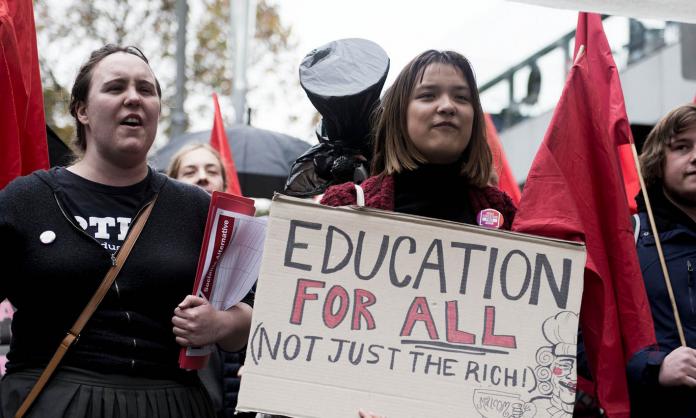Student HECS debts are set to increase by 7.1 percent after the Labor government rejected calls to freeze annual increases in the debts. The average debt will increase by $1,758.72. It’s a rude awakening for many current and former students.
HECS was introduced by the Hawke Labor government after it abolished free education. Under the scheme, students borrow money from the government to pay for their degree. The debt is indexed to inflation, increasing each June. Students and graduates start paying when their income reaches a threshold, which is currently about $47,000 per year.
This is supposedly because the beneficiaries of education are students, who can access higher paying jobs as a result of their degree. The argument is that students should pay for this “privilege”, rather than being subsidised by “the vast majority of taxpayers [who] do not have the huge benefit of a university degree”, in the words of Bruce Chapman, the architect of the scheme.
The picture this paints—of an educated wealthy elite living large off the taxes of ordinary mums and dads—doesn’t fit reality. A recent report notes that the people who collectively pay the most in HECS are not high-flying lawyers, but nurses and teachers. So HECS is not about people on six-figure salaries paying their due to society; it’s a tax on the working class.
The other problem with Chapman’s argument is that the earnings benefit to individuals is dwarfed by the benefit to businesses, which make higher profits because their workers are more productive.
Modelling by Deloitte found that this increased productivity amounted to an extra $140 billion in GDP in 2014. The estimated higher earnings for students were a fraction of that, at $24 billion. The capitalist class wants workers to be educated, but doesn’t want to pay for it. So, increasingly, that cost has been pushed onto students, who are expected to pay for the “privilege” of getting a qualification your boss wants you to have.
Students shouldn’t accept this. We should demand fully funded, free education. The bare minimum would be to freeze indexation, so that HECS debts don’t get nominally bigger over time, and increase the repayment threshold so those on low incomes get some cost-of-living relief. That was proposed in a bill moved by Greens Senator Mehreen Faruqi, which was rejected by a Labor-chaired review committee.
Tony Sheldon, ALP senator and chair of the Education and Employment Legislation Committee reviewing the bill, made clear that Labor intends to claw back every cent from students. “The committee is particularly concerned about the uncosted financial implications of the bill which ... could be in the order of $2 billion, and $9 billion for ongoing revenue effects”, he said.
This is a slap in the face from Labor. The government is giving the richest Australians $243 billion through the so-called Stage 3 tax cuts, but won’t pay a measly $2 billion to reduce the pressure from student debt. It’s giving handouts to the rich, but taking all it can get from workers, who are enduring real wage cuts.
Given all that, it’s important that students have been protesting around the country against the increase to HECS and the broader cost-of-living crisis, in rallies organised by the National Union of Students. Students will be hitting the streets again on 19 May to protest Labor’s budget for the rich, calling for a freeze on HECS and rent and substantial increases to JobSeeker. Immediate demands like this are important.
But the alarming rise in HECS is the logical result of a funding model that privatises the cost of education. The Australia Institute estimated it would cost $3.1 billion per year to make undergraduate education free for all citizens and permanent residents. Assuming an equal amount for undergrad international students and for postgraduates, that’s $12.3 billion per year.
We could easily fund free education instead of nuclear submarines that increase the threat of world war. But given the Labor government is hell-bent on making us pay, we’re going to have to fight for it.








